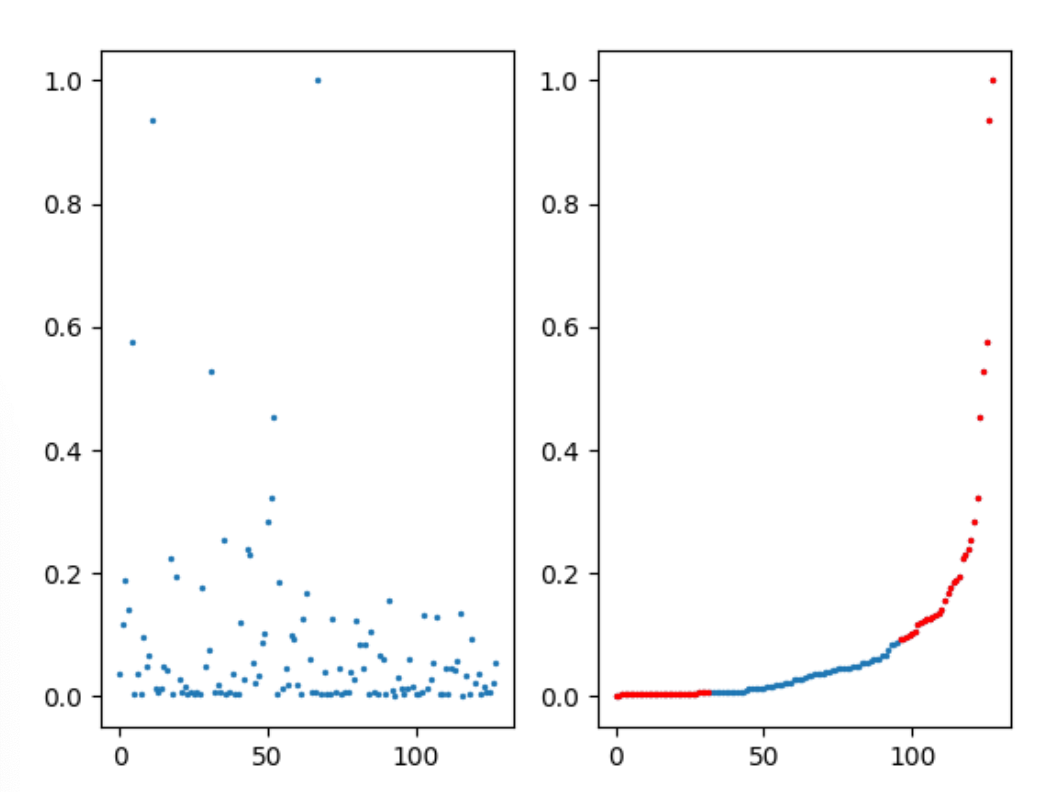The Modality Focusing Hypothesis: Towards Understanding Crossmodal Knowledge Distillation
Zihui Xue, Zhengqi Gao, Sucheng Ren, Hang Zhao
ICLR, 2023 (notable top-5%)
arXiv | website
Go to directory gauss
(1) Use synthetic Gaussian data to gain intuition about MFH
[Figure 2 and 3 in the paper] Generate multimodal data (data generation inspired from here), and apply cross-modal KD.
python main.pyExperiment 1: vary γ
Experiment 2: vary α
(2) Verify the implications of MFH
python main_modify_gamma.py[Table 2 in the paper] Modify γ in data, and observe the performance differences of cross-modal KD.
Three modes: (a) baseline-randomly keep some feature channels in x1; (b) if the ground truth data generation way is known, only keep "modality-general decisive" features channels in x1; (c) if the data generation process is unknown, use Algorithm 1 to rank features based on "modality-general decisive" information.
Modifying data results in different γ, we then re-apply cross-modal KD to observe the performance differences. For mode (b) and (c), we observe that: although teacher performance downgrades significantly, student performance does not get affected. This helps verify the MFH implication and our proposed Alg. 1 as well.
Go to directory ravdess
Dataset: The Ryerson Audio-Visual Database of Emotional Speech and Song (RAVDESS).
Teacher modality: audio; Student modality: images.
We provide the data splits and pre-processed features here. Save the folder as ravdess/data.
(1) [optional] use Algorithm 1 to calculate the salience of modality-general decisive information for each feature channel
python main_overlap_tag.py --place 5 --num-permute 10 --first_time --cal_tag--place controls at which layer we input multimodal features to the algorithm. The default choice is 5, which corresponds to a feature dimension of 128.
--num-permute controls the number of permutations, which corresponds to M in Algorithm 1.
--first-time will first train the unimodal networks (i.e., step 1 in Algorithm 1).
After training, the teacher checkpoint (teacher_mod_1_overlap.pkl) and saliency vector (overlap_tag_teacher_place{place}_repeat{num_permute}.npy) will be generated under the ./results directory.
In addition, we provide the results directory here. Save the folder as ravdess/results and skip this step.
Visualize the saliency vector.
python utils/helper.pyThe saliency vector is normalized to be [0, 1]; a larger value indicates a more salient feature channel (i.e., this channel contains more modality-general decisive information).
(2) Verify MFH using the calculated saliency vector.
# Mode 0 - randomly remove 75% feature channels
python main_overlap_tag.py --ratio 0.75 --mode 0 --eval_tag
# Mode 1 - Modality-general KD: remove the top %r feature channels that have the least modality-general decisive info
python main_overlap_tag.py --ratio 0.75 --mode 1 --eval_tag
# Mode 2 - Modality-specific KD: remove the top %r feature channels that have the most modality-general decisive info
python main_overlap_tag.py --ratio 0.75 --mode 2 --eval_tagThe expectation is that modality-general KD (mode 1) will yield the best student network.
Go to directory vggsound
Dataset: VGG-Sound A large scale audio-visual dataset.
Teacher modality: audio; Student modality: video.
(1) Pretrain the audio teacher model and video model.
cd audio
python main_audio.py --train_dataset /path/to/vggsound/train --test_dataset /path/to/vggsound/test
# the pretrained checkpoint will be saved at "ckpt/audio_{}_{}.pt".format(epoch, test_acc)
cd ../video
python main_audio.py --train_dataset /path/to/vggsound/train --test_dataset /path/to/vggsound/test
# the pretrained checkpoint will be saved at "ckpt/audio_{}_{}.pt".format(epoch, test_acc)
cd ..(2) Calculate the salience of modality-general/specific information for each feature channel.
cd modality_general
python cal_overlap_permute.py --train_dataset /path/to/vggsound/train --test_dataset /path/to/vggsound/test --a_ckpt /path/to/audio_pretrain.pth --v_ckpt /path/to/video_pretrain.pth
# The degree of "modality-general decisive" of each channel audio_permute.npy
cd ..(3) Verify MFH
cd mfh_kd
python -m torch.distributed.launch --nproc_per_node 2 python main.py --train_dataset /path/to/vggsound/train --test_dataset /path/to/vggsound/test --a_ckpt /path/to/audio_pretrain.pth@inproceedings{xue2023modality,
title={The Modality Focusing Hypothesis: Towards Understanding Crossmodal Knowledge Distillation},
author={Xue, Zihui and Gao, Zhengqi and Ren, Sucheng and Zhao, Hang},
booktitle={ICLR},
year={2023}
}



